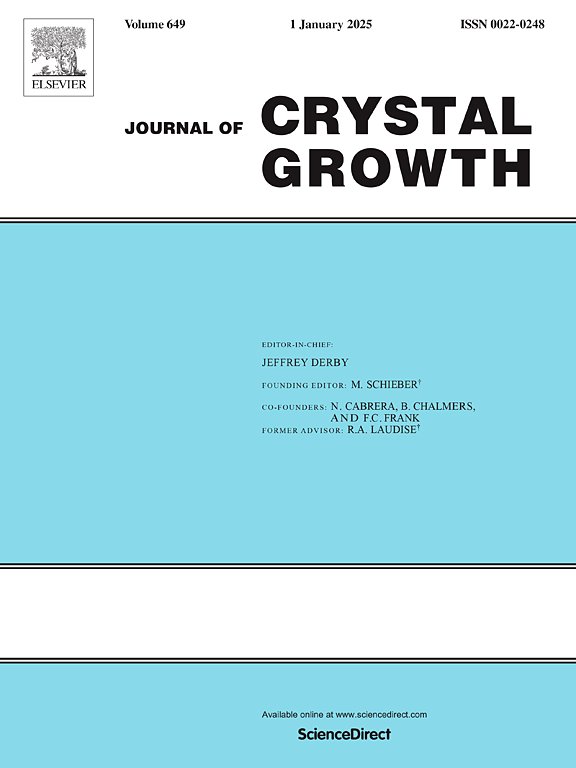牵伸管折流式结晶器的四向耦合数值研究
IF 1.7
4区 材料科学
Q3 CRYSTALLOGRAPHY
引用次数: 0
摘要
本文利用计算流体动力学模拟了牵伸管折流式结晶器中的液固两相湍流。在这方面,应用了多相欧拉模型和种群平衡方程。为实现四向耦合,考虑了聚集和破碎。采用 RNG k-ε 和 RSM 湍流模型对两相湍流进行了数值模拟。结果表明,应用 RNG k-ε 和 RSM 湍流模型,沿 x 轴的轴向速度剖面有显著差异,而沿 z 轴的轴向速度剖面差异较小。此外,还观察到两种模型的体积分数存在明显差异,主要涉及引流管内的区域以及挡板和结晶器壁之间的距离。此外,将螺旋桨转速从每分钟 165 转调至 495 转,结果表明,就颗粒停留时间而言,每分钟 330 转的转速最佳。结果还表明,叶轮转速的提高是液相和固相之间质量交换增强的主要原因之一。因此,随着叶轮转速的提高,质量交换率从 165 rpm 时的 9.92 kg/h 提高到 495 rpm 时的 29.07 kg/h。本文章由计算机程序翻译,如有差异,请以英文原文为准。
A four-way coupled numerical investigation of draft tube baffled crystallizer
In the present paper, the liquid–solid two-phase turbulent flow in a Draft Tube Baffled crystallizer has been simulated using Computational Fluid Dynamics. In this respect, multiphase Eulerian model along with population balance equations were applied. To implement four-way coupling, aggregation and breakage were considered. The RNG k-ε and RSM turbulence models were employed to conduct numerical simulation of two phase turbulent flow. Results demonstrated that applying RNG k-ε and RSM turbulence models, a significant difference in axial velocity profiles along the x-axis is observed, while those along the z-axis exhibit less difference. Moreover, a significant difference in volume fraction between the two models was observed which mostly concerns the region within the draft tube and the distance between the baffle and crystallizer wall. Furthermore, changing the propeller speed from 165 to 495 rpm, the speed of 330 rpm showed to be optimal in terms of particles residence time. The results also showed that a rise in impeller speed is one of the major contributors to mass exchange enhancement between the liquid and the solid phases. Accordingly, as the impeller speed rises, the rate of mass exchange increases from 9.92 kg/h for 165 rpm to 29.07 kg/h for 495 rpm.
求助全文
通过发布文献求助,成功后即可免费获取论文全文。
去求助
来源期刊

Journal of Crystal Growth
化学-晶体学
CiteScore
3.60
自引率
11.10%
发文量
373
审稿时长
65 days
期刊介绍:
The journal offers a common reference and publication source for workers engaged in research on the experimental and theoretical aspects of crystal growth and its applications, e.g. in devices. Experimental and theoretical contributions are published in the following fields: theory of nucleation and growth, molecular kinetics and transport phenomena, crystallization in viscous media such as polymers and glasses; crystal growth of metals, minerals, semiconductors, superconductors, magnetics, inorganic, organic and biological substances in bulk or as thin films; molecular beam epitaxy, chemical vapor deposition, growth of III-V and II-VI and other semiconductors; characterization of single crystals by physical and chemical methods; apparatus, instrumentation and techniques for crystal growth, and purification methods; multilayer heterostructures and their characterisation with an emphasis on crystal growth and epitaxial aspects of electronic materials. A special feature of the journal is the periodic inclusion of proceedings of symposia and conferences on relevant aspects of crystal growth.
 求助内容:
求助内容: 应助结果提醒方式:
应助结果提醒方式:


